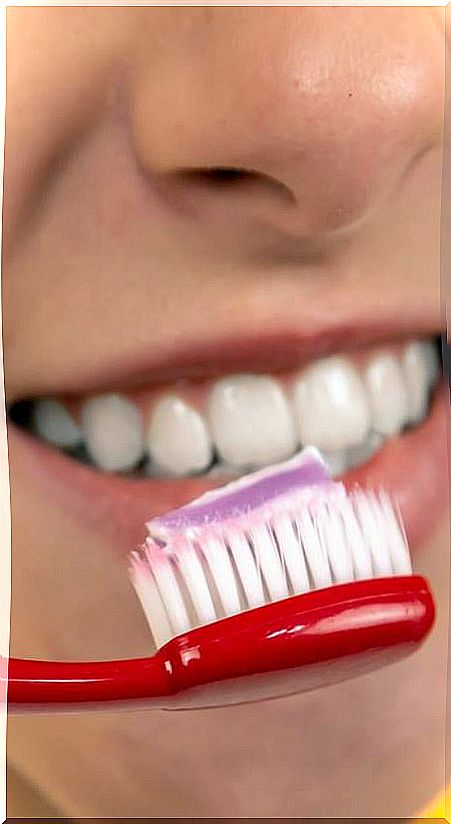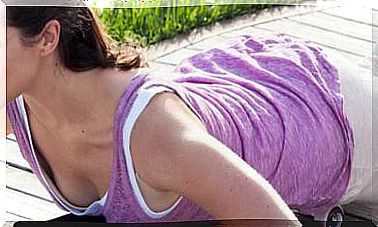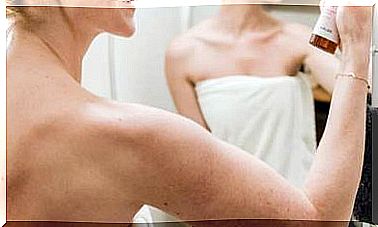Is Sodium Lauryl Sulfate In Toothpaste Safe?
Sodium lauryl sulfate is a highly lathering detergent and is very common in toothpastes and all kinds of hygiene products, but it is related to irritation of the mucosa of the mouth.

Sodium Lauryl Sulfate (SLS) is a common detergent used in toothpaste, as well as many other cosmetic and hygiene products, such as shampoos and bath gels.
One of its attractions is that it makes a lot of foam. In the year 2000, a false story spread online, according to which it was proven to cause cancer in the long term. The American Cancer Society came up with a note reviewing the scientific literature on the known effects of SLS and denying the alarm.
Sodium lauryl sulfate increases the risk of canker sores
Just because the sodium lauryl sulfate in toothpaste doesn’t cause cancer doesn’t mean it can’t cause problems. Several studies confirm that it acts as an irritant of the mucosa of the mouth that increases the risk of developing thrush, especially in people with this tendency.
In one of the papers, the researchers took ten men and women who suffered more than one canker sore a week and an average of 18 over a three-month period. All of these people had been using a toothpaste with SLS. To do the study, they abandoned pasta for three months. Participants reduced the incidence of canker sores from 18 to 5, which is a 70 percent decrease. The scientists concluded that SLS negatively affects the protective mucus that lines the inside of the mouth.
In subsequent studies, the researchers looked at the effects of SLS toothpaste on the gums of volunteers. They were able to verify that the substance caused an increase in blood circulation, which is a symptom of inflammation and irritation.
Other research showed that the paste with SLS produces a flaking of the most superficial layers of the inside of the mouth. Some studies link this detergent to gingivitis (gum irritation), as well as canker sores. Studies indicate that the intensity of irritation depends on how long the product remains in contact with the mucous membranes or the skin.
If you are not prone to thrush or gingivitis, short-term contact with SLS is relatively safe and should not cause concern. If you suffer from canker sores or irritations on the skin or in the mouth, it may be advisable to look for alternatives.
Where is sodium lauryl sulfate found?
- Grooming products, such as shaving cream, lip balm, hand sanitizer, nail treatments, makeup remover, facial cleansers, scrubs, and liquid hand soap.
- Hair products, such as shampoo, conditioner, hair dye, dandruff treatment, and styling gel.
- Dental care products, such as toothpaste, teeth whitening products, and mouthwashes.
- Bath products, such as bath oils or salts, body wash, and bubble bath.
- Creams and lotions, such as hand creams, masks, anti-itch creams, depilatory products, and sunscreen.
How can you avoid sodium lauryl sulfate?
Sodium lauryl sulfate (SLS) can be obtained from petroleum or vegetable fats such as coconut and palm. Natural and ecological certifications prohibit petroleum derivatives, but allow vegetables. Therefore, the SLS is a product that you can also find in certified products.
Many natural products opt for “sodium coco sulfate” (SCS) which is a more diluted and milder version. In fact, SLS is made separate from sodium coco sulfate.
On the other hand, in natural products sodium lauryl ether sulfate (SLES) is not allowed, which is another less irritating version of SLS but in whose production a carcinogenic dioxin can be generated.
Investigations carried out by the Canadian health authorities estimate that the amount of dioxin generated is not of concern to health. However, as a precautionary principle, sodium lauryl ether sulfate is less recommended than SLS itself.
Most conventional pastes contain SLS or SLES, so the only ways to avoid these compounds are to choose a certified organic product with “sodium coco sulfate” (SCS) or to make a homemade toothpaste.
Scientific references:
- BB Herlofson and P. Barkvoll. Sodium lauryl sulfate and recurrent aphthous ulcers. A preliminary study. Acta Odontologica Scandinavica.
- Cara AM Bondi et al. Human and Environmental Toxicity of Sodium Lauryl Sulfate (SLS): Evidence for Safe Use in Household Cleaning Products. Environmental Health Insights.
- BB Herlofson and P. Barkvoll. Desquamative effect of sodium lauryl sulfate on oral mucosa. A preliminary study. Acta Odontologica Scandinavica.









